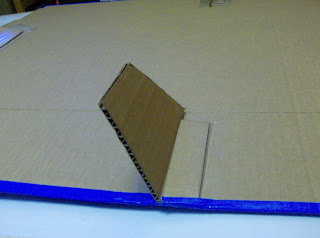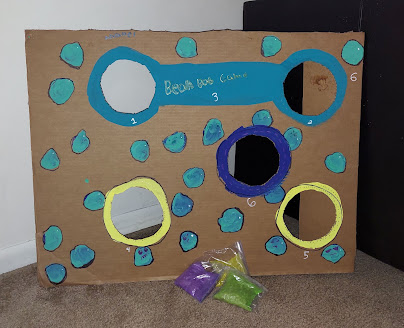Young artists like to create self portraits that look a certain way without focusing too much attention on challenging endeavors such as correct facial features and proportional body parts. They are much more interested in projecting an image of themselves that pleases them personally.
Instead of saying, "draw a picture of yourself," I like to provide creative ideas and imaginative opportunities to create self- expressive portrait art. This can allow the child to live vicariously by experimenting with different 'selves' - or self images. Or perhaps different looks or appearances. Different ways of being.
This can even work when learning about the master artists. For example, a self portrait created in the manner of Marc Chagall (see lesson below) would result in something quite different than a Picasso inspired self portrait!
Below you will find TEN different ways to inspire expressive self portrait artwork. Grade recommendations are suggestions only: most of these lesson ideas can be adjusted to the creative abilities of any young artist. So let's get creative and have some fun with expressive self portrait art!!!
Pre-school through lower elementary grades:
Super Me! (ta da!!!)Guess what? Young children REALLY like the idea of being a super heroes! (Who knew?) Imagine... "The Burp" saves the day!!!
Our superheroes were drawn with Sharpies. Then the backgrounds were painted with watercolor. The idea was to create starbursts, starting with a dot in the center of the page and painting "lines" from it to the edges. Or not. While they painted, I cut out the figures. Then the portraits were glued to the dried background.
Here's a similar project using bleeding tissue to create the colorful background. And this one involves a variety of mixed media, but is oh-so-simple, even for the youngest artists! (I think it's adorable!)
What kid doesn't want to make a life sized 'twin' of him or herself?
We made these as a "Try It" Makerspace Challenge. Our artists found out right away that this would be a cooperative effort. After all, once you lie down on the big sheet of butcher paper, you can't really draw around yourself - you need help!!!
As these life sized portraits are drawn and then painted, decisions are made regarding facial expressions, skin tones, hair styles, accessories, clothing fashions, and colors.
Collage elements can be added for additional awesomeness, such as shiny papers for jewelry and yarn for hair.
Now display your 'twin' on your bedroom door to watch over things while you are away!
Elementary grades:
This "3D" self portrait is deceptively easy to create!
The artist first draws a picture of him/herself doing something: it's all about action! After the drawing is completed and colored in, it is placed on top of a piece of black paper and taped here and there to keep the pieces together. Now the artist carefully cuts out the figure, cutting through both sheets to create a duplicate black figure.
The black shadow is then glued down to a piece of construction paper. Then the portrait is glued over the shadow, being sure to offset it somewhat so that the shadow can be clearly seen behind the figure.
Kids love creating these mini versions of themselves!
Call them mini-me's, avatars, personal cartoon characters, self animations, twins, or personal clones... whatever they are, they'll love this project!
Learn how to make them on our previous weblog post - and have fun!!!
Flying Me!
Middle school and high school:
"How would I look as a LEGO person?" That's a question that can be answered with art!
We made these amazing Lego people by first inspecting a few Lego people from our MakerSpace Lego collection. Then we designed and created our own personal Lego characters.
This mixed media, toy-based self portrait art project was so much FUN, even our older artists loved it - including me!
Pop Art MeHere is another 'Paint like the Masters' art lesson, this time featuring the 1960's pop art of Andy Warhol. This is a digital art / creative collage project, which older kids can really get into!
To create our pop art, we used fotoflexer to create our grid of Warhol-like portraits, which we printed out for our collage. We've since found an easier-to-use app for this, called convertimage.net.
Next, you'll collect and cut out your initials from everywhere, and add them, along with any other chosen images, to your collage! Check out our previous weblog post for all the details.
Manga Me
You can learn more about creating manga character portrait art at deviantart.com, where you'll find everything thing you need to create your own Manga style personal avatar!
BONUS PROJECT! Take an imaginary trip - and then take a selfie!
First, print out this pdf of fun selfie frames (four in all). Young artists can then create their own 'selfies' by drawing themselves in the frames and adding any type of background they wish - the Eiffel Tower? The Great Pyramids of Egypt? The bottom of the sea? Outer space? Remind them to wear the appropriate attire - such as a wetsuit & goggles or a spacesuit - for their chosen destination!





















































